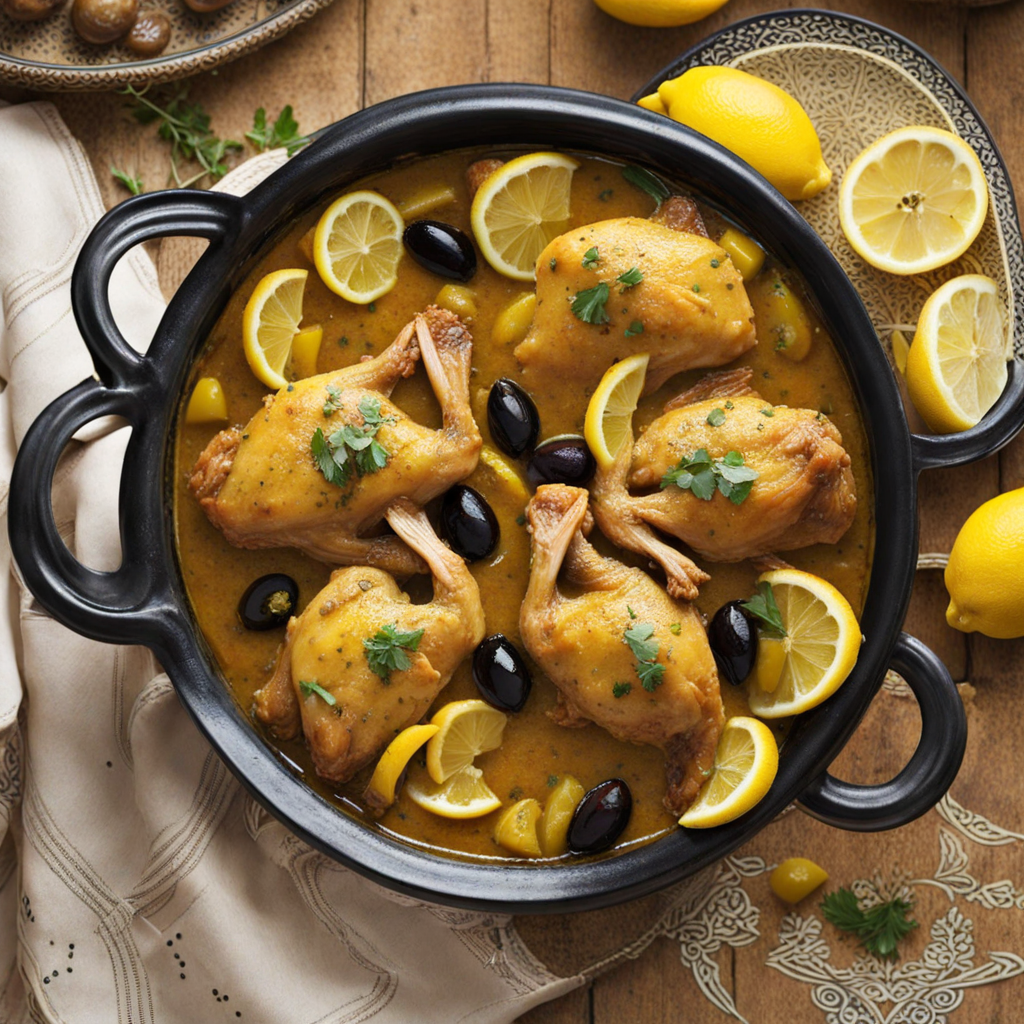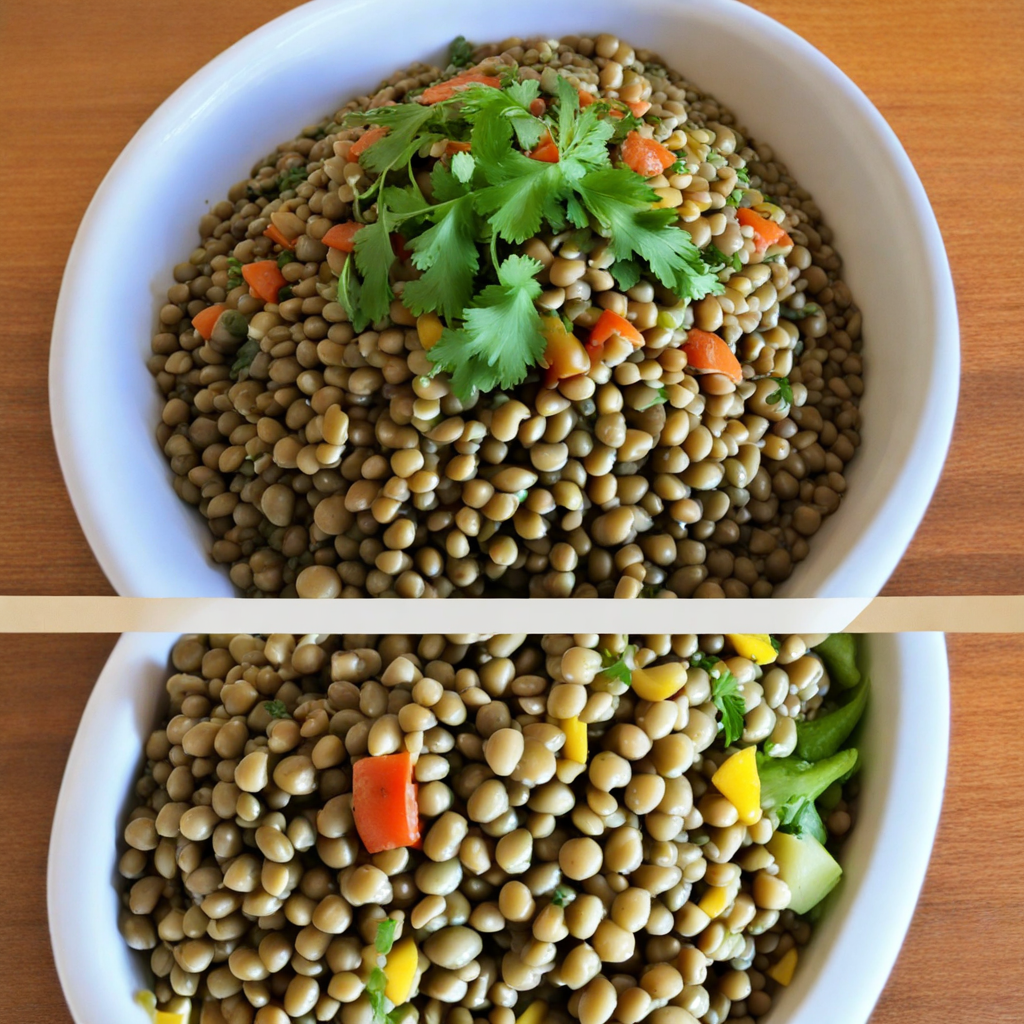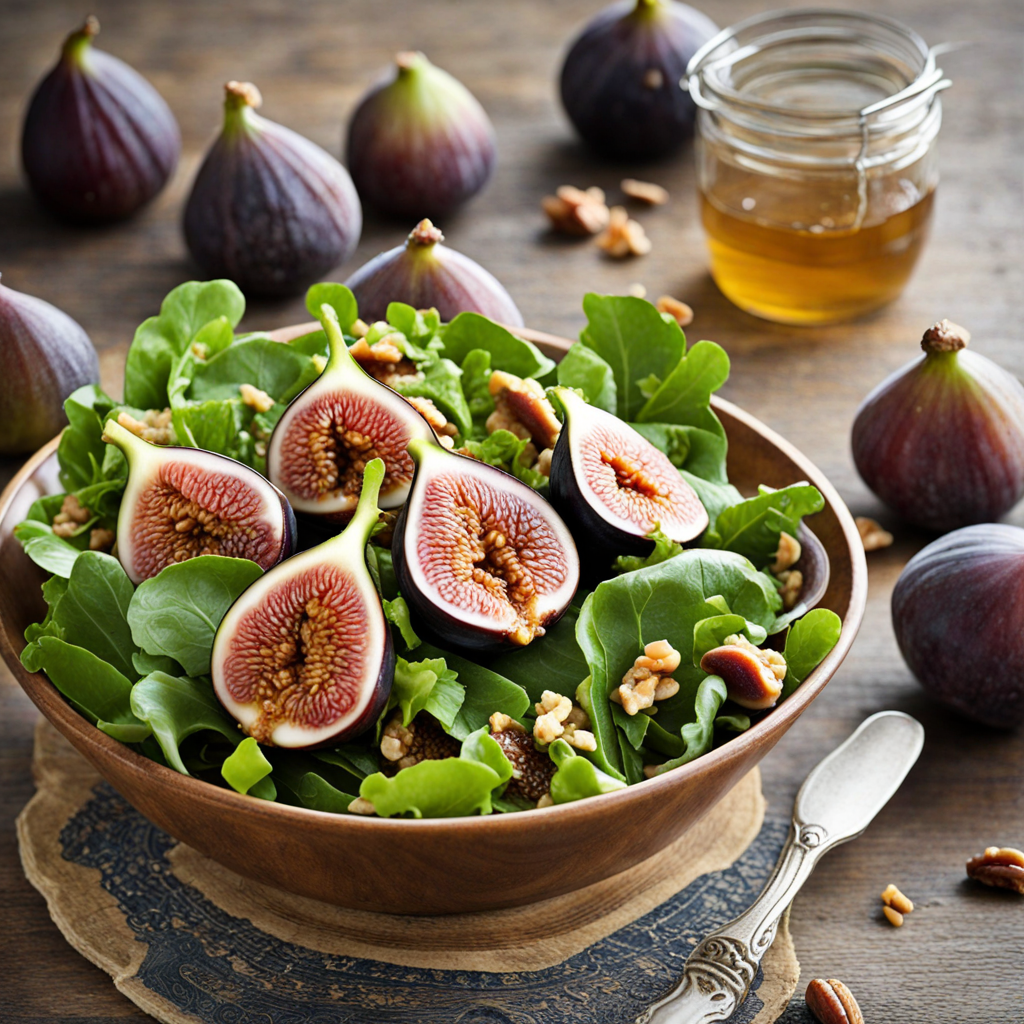Chicken Lemon Tagine
Chicken Lemon Tagine is a delightful Moroccan dish that beautifully combines the vibrant flavors of citrus, spices, and tender chicken. At its core, this dish features chicken pieces that are slowly simmered in a fragrant sauce made from preserved lemons, olives, and an array of spices such as ginger, cumin, and saffron. The preservation process of the lemons adds a unique tanginess that elevates the dish, infusing the chicken with a bright, zesty flavor that is both refreshing and comforting. The slow-cooking method in a traditional tagine pot allows the flavors to meld seamlessly, resulting in a rich and aromatic sauce that coats the chicken perfectly. The addition of olives adds a briny depth to the dish, balancing the acidity of the lemons. Often served with a side of fluffy couscous or crusty bread, Chicken Lemon Tagine invites you to soak up every last drop of its savory sauce. The texture of the chicken is incredibly tender, thanks to the long cooking time, making each bite succulent and melt-in-your-mouth delicious. The vibrant colors of the dish—golden chicken, bright yellow lemons, and deep green olives—make it as visually appealing as it is flavorful, capturing the essence of Moroccan cuisine. A meal of Chicken Lemon Tagine is not just about the food; it’s about the experience of sharing a dish that represents hospitality and warmth. Traditionally enjoyed in a communal setting, this dish brings people together, encouraging conversation and connection over a beautifully cooked meal. Whether you are trying it for the first time or revisiting a beloved favorite, Chicken Lemon Tagine promises to take your taste buds on a culinary journey to the heart of Morocco, leaving you craving more of its unique and delightful flavors.
How It Became This Dish
The History of طاجين الدجاج بالليمون (Chicken Tagine with Lemon) from Morocco Introduction to Moroccan Cuisine Moroccan cuisine is a vibrant tapestry woven from a multitude of cultural influences and regional ingredients. It reflects the country’s rich history as a crossroads of various civilizations, including Berber, Arab, Andalusian, and Mediterranean. At the heart of this culinary tradition is the tagine, a slow-cooked stew named after the earthenware pot in which it is prepared. Among the myriad variations, one of the most beloved dishes is طاجين الدجاج بالليمون (tagine de poulet au citron), or chicken tagine with lemon, a dish that perfectly encapsulates the essence of Moroccan flavors. Origins of the Dish The origins of chicken tagine with lemon can be traced back to the Berber people, the indigenous inhabitants of Morocco, who have long relied on the land’s agricultural bounty. The use of preserved lemons, a key ingredient in this dish, has its roots in ancient preservation techniques, where lemons were salted and fermented to extend their shelf life. This method not only enhanced the citrus flavor but also added a unique depth to dishes, becoming a staple in Moroccan kitchens. Historically, the tagine itself dates back to the 9th century, with the introduction of the cooking vessel believed to be influenced by the early culinary practices of the Arab world. The shape of the tagine, with its conical lid, allows for the slow cooking of meats and vegetables, enabling the retention of moisture and flavor. The combination of chicken with preserved lemons and olives became particularly popular, symbolizing the harmonious blend of sweet, sour, and salty flavors characteristic of Moroccan cuisine. Cultural Significance In Moroccan culture, food serves not only as sustenance but also as a medium for social connection and tradition. Meals are often communal, shared among family and friends, with tagines serving as the centerpiece. The preparation of chicken tagine with lemon embodies the spirit of hospitality, as it is often prepared for special occasions and gatherings. The dish is a staple during important celebrations such as weddings, religious holidays, and family reunions, showcasing the importance of food in Moroccan social and cultural life. The dish also reflects the historical trade routes that have shaped Moroccan culinary practices. The introduction of spices such as saffron, cumin, and coriander can be attributed to the influence of the Silk Road and the spice trade. These spices not only elevate the flavor of the tagine but also signify Morocco's position as a cultural melting pot, where diverse culinary traditions converge. Development Through Time As Moroccan cuisine evolved, so did the preparation of chicken tagine with lemon. The dish has adapted to regional variations, reflecting the local ingredients and cooking techniques. In coastal areas, for instance, seafood tagines are common, while inland regions may favor lamb or beef. However, chicken remains a popular choice due to its availability and versatility. In the 20th century, Moroccan cuisine began to gain international recognition, partly due to the country's increasing tourism. Traditional dishes, including chicken tagine with lemon, were introduced to global palates through Moroccan restaurants and cooking classes, allowing for a wider appreciation of the intricate flavors of Moroccan cooking. Chefs began to experiment with the dish, incorporating modern techniques while preserving its authentic essence. The global interest in Moroccan cuisine also led to the rise of preserved lemons as a gourmet ingredient in international kitchens. Home cooks and professional chefs alike began to embrace the tangy, complex flavor of preserved lemons, using them in various culinary applications beyond traditional tagines. This culinary cross-pollination has contributed to the evolving identity of chicken tagine with lemon, allowing it to transcend cultural boundaries while remaining rooted in Moroccan tradition. Contemporary Interpretations Today, chicken tagine with lemon continues to be a beloved dish, both in Morocco and around the world. It is often served with a side of fluffy couscous or crusty bread, allowing diners to savor every morsel of the savory stew. While the traditional recipe remains cherished, contemporary interpretations have emerged, incorporating seasonal vegetables or alternative proteins to cater to diverse dietary preferences. Modern cooking methods, such as the use of pressure cookers and slow cookers, have also made the preparation of chicken tagine more accessible to home cooks. These innovations save time while still delivering the rich flavors and tender textures for which the dish is known. Additionally, the rise of social media platforms has allowed food enthusiasts to share their own variations, fostering a sense of community and creativity around Moroccan cooking. Conclusion The journey of طاجين الدجاج بالليمون from its humble origins to its status as a cherished dish in Moroccan cuisine is a testament to the resilience and adaptability of culinary traditions. It serves as a bridge between the past and the present, connecting generations through shared meals and cultural customs. As food continues to evolve, chicken tagine with lemon remains a symbol of Moroccan hospitality, flavor, and history, inviting all who partake to experience the rich tapestry of Moroccan culture through its most beloved dishes. In essence, chicken tagine with lemon is not just a meal; it is a celebration of Moroccan identity, history, and the enduring power of food to unite people across cultures and generations. Whether enjoyed in a traditional Moroccan home or a modern restaurant, this dish continues to captivate the hearts and palates of many, echoing the timeless legacy of Moroccan culinary artistry.
You may like
Discover local flavors from Morocco







